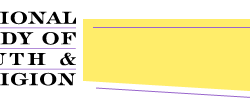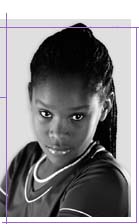|
DeZolt, Denise M. and Mary Henning Stout. 1999. "Adolescent Girls' Experiences in School and Community Settings." Pp. 253-275 in Beyond Appearance: A New Look at Adolescent Girls, edited by Norine G. Johnson and Michael C. Roberts. Washington, DC: American Psychological Association.
Abstract: In this chapter, the authors consider the experiences of adolescent girls in school settings. Specifically, they review the research related to (1) differential socialization of girls and boys, (2) gender equity in curricula, (3) single-sex schools, (4) issues of school harassment, and (5) the experiences of lesbian and bisexual students in schools. They also discuss factors that promote the academic success not only of girls but also of students in general. They explore the research findings regarding community programs, including religious institutions, in which adolescent girls are embedded. Within these contexts, there are factors that support the developing skills of young women as well as other factors that promote gender stereotypes. The authors also describe the Girl's Leadership Center (GLC) at Lewis and Clark College, a project for, about, and with adolescent girls developed to facilitate responsive school and community collaboration to enhance girls' strengths and to address their needs. Through the GLC, women and adolescent girls from many walks of life meet together to support, to teach, and to learn from one another. Stories and narratives from the authors' current research are shared throughout to provide a place for girls' voices and experiences. [Source: PI]
Morrison, T. G., A. V. Parriag, and M. A. Morrison. 1999. "The Psychometric Properties of the Homonegativity Scale." Journal of Homosexuality vol. 37, pp. 111-126.
Abstract: This research details the psychometric properties of an instrument designed to measure negative attitudes toward gay men and lesbians (the Homonegativity Scale-HS). Four studies were conducted using adolescents (N = 1078), university students (N = 343), and members of the general population (N = 146). Results suggest that the HS possesses a unidimensional factor structure and a high degree of internal consistency for both male and female participants. As predicted, scores on the HS were positively correlated with machismo, authoritarianism, political conservatism, religiosity, and modern sexism. In addition, responses on the HS did not appear to be contaminated by social desirability bias. The usefulness of this measure in survey research is discussed. [Source: ML]
O'Shea, Kaitilin Stevens. 1999. "Growing up Lesbian and Gay: Views from Young Adulthood." Ph.D. Thesis, University of Delaware.
Abstract: This investigation sought to explore the developmental experiences of lesbian and gay individuals throughout adolescence and young adulthood, with a focus on the process of identity development. Employing an ecological perspective and modified grounded theory methods of analysis, this investigation examined the influence of individual, situational (i.e., school, family, religious, and other communities of belonging), and sociohistorical variables on the developmental identity processes of lesbian and gay youth. Each of 26 respondents (ranging in age from 18 to 30) participated in two qualitative, open-ended interviews regarding their developmental experiences. Content analysis revealed three emergent themes: the impact of proximate socialization forces (e.g., peer, family, and community groups); the influence of sociohistorical context; and, the importance of "telling the truth" about lesbian and gay sexual identities. In addition, a common identity narrative-one that describes identity formation, identity expression, identity integration, and identity refinement—emerged for all respondents. Respondents reported highly variable experiences in a variety of social contexts during their childhood, adolescence, and young adult years. The importance of the media, gender socialization, sexuality socialization, and religious socialization were described by a majority of the respondents. In addition, each respondent described a common identity narrative that included: coming to awareness of a lesbian or gay sexual identity; a period of silence about their identity (the critical period); learning to express their sexual identity; integrating a sexual identity with other aspects of self; and, refining that identity over time. One of the major contributions of this study is that it describes a range of experiences in developmental identity processes, and the influences from mainstream culture, as filtered through individuals, most proximate social environments. Most respondents indicate the negative influences of homophobia and heterosexism in culture, while they reveal the positive influence of support from within various proximate systems. Respondents, narratives demonstrate the common experiences of growing up with a stigmatized identity, and the continued need for changes in cultural attitudes, and support services for youth, parents, school personnel and others who determine programs and policies in other social institutions. [Source: DA]
Maher, Michael Joseph S. Jr. 1997. "The Dis-Integration of a Child: Gay and Lesbian Youth in Catholic Education." Ph.D. Thesis, Saint Louis University.
Abstract: This dissertation involved four studies: a document analysis of contemporary Catholic magisterial teaching on the philosophy of Catholic education as it pertains to the topic of homosexuality, a survey of incoming freshman at a Midwestern Catholic university on their level of agreement with 16 points of Catholic teaching on the topic of homosexuality, a study using in-depth interviews with 25 (13 male and 12 female) gay and lesbian adults who attended Catholic high schools and graduated in the 1980s and 1990s, a study using in-depth interviews with 12 counselors currently working in Catholic high schools. The document analysis yielded the conclusion that Catholic education must discuss the topic of homosexuality, must reduce homophobia in its students, parents, and teachers through education, and must provide support services for gay and lesbian students. The survey (N = 103) demonstrated that students graduating from Catholic high schools generally had more positive attitudes toward homosexuality and gay and lesbian people than those graduating from non-Catholic high schools. Females generally had more positive attitudes than males. Among Catholic school graduates, those graduating from coeducational schools generally had more positive attitudes than those graduating from unisex schools. Agreement levels in terms of the Church's responsibilities to gay and lesbian people and the unacceptability of verbal harassment of gay and lesbian people were disturbingly low. The study of gay and lesbian alumni of Catholic high schools demonstrated a theme of "Dis- integration." Subjects were dis-integrated socially, institutionally, spiritually, and in a terms of sexual identity. This is particularly important because integration at all these levels is a goal of Catholic education. The study of Counselors yielded the conclusion that Catholic schools generally are not doing enough to help this population. [Source: DA]
Toman, James Anthony. 1997. "Dual Identity: Being Catholic and Being Gay." Ph.D. Thesis, Cleveland State University, Cleveland.
Abstract: The aim of this research was to utilize survey methods to investigate the relationship between two important personal identity markers, one's religiosity and one's sexual orientation, and to examine these variables at two points in the life span, retrospectively during youth and concurrently in adulthood. Specifically, the study involved adult males raised in the Catholic tradition and the process of their homosexual identity formation. This research sought to determine if significant relationships exist between: (1) the strength of youthful religious conviction and difficulty experienced during the adolescent coming-out process; (2) formative religious conviction and later ability to achieve an adult gay-affirmative life style; (3) religious conviction in the formative and adult years; (4) the difficulty of coming-out and subsequent adult religious conviction; (5) the difficulty of coming-out and adult capacity to experience a gay-affirmative life style; and (6) adult religious conviction and capacity for a gay-affirmative life style. The 70 respondents in the study were voluntary and their survey responses anonymous. They were recruited either by contact from professionals who work with individuals in the gay community or through advertisements in the gay community and in the gay-oriented media. Analysis of responses utilized quantitative procedures, but respondents also provided narrative answers which added explanatory detail and enriched and clarified the findings and conclusions. The findings from this study suggest that: (a) a significant statistical relationship exists between adolescent religiosity and difficulties encountered in the adolescent coming-out process, and also between adolescent and adult religiosity; and (b) no statistically significant relationship exists between adolescent religiosity and difficulties experienced in achieving a affirmative adult gay life style, between adolescent and adult sexual identity processes, nor between the adolescent coming-out process and adult religiosity. This study further suggests that the interplay of religious and sexual identity factors is a complex one. The data it offers may serve to illuminate for those who work with the gay population some of the important issues through which gay clients must navigate, and to suggest to researchers in the field of religious and sexual orientation identity formation useful directions which further research might take. [Source: PI]
Waldner Haugrud, Lisa K. and Brian Magruder. 1996. "Homosexual Identity Expression among Lesbian and Gay Adolescents." Youth and Society vol. 27, pp. 313-333.
Abstract: The influence of structural factors on homosexual identity expression is often neglected in theoretical & empirical analysis. The negotiated identity model proposes that perceptions of external forces influence adolescents through supportive resources & obstacles that may inhibit identity expression. Mail questionnaire data were obtained from a snowball sample of 85 lesbians & 87 gay male (M) adolescents. Perceptions of structural associations tested included religiosity, importance of school, political ideology & socioeconomic status (SES) of parents, importance of heterosexual friends, frequency of & importance of heterosexual sexual encounters, & gender nonconformity. Multiple regression analysis explained more of the variance for gay Ms than for lesbians. Variables important for gay Ms included political ideology, SES, heterosexual friends, & gender nonconformity. Significant variables for lesbians included religion & importance of school. Gender differences are discussed as well as implications for adolescents. [Source: SA]
Holtzen, David Wayne. 1993. "Family Responses to Homosexuality: Correlates to Homophobia, Gay/Lesbian Self-Disclosure and Parent/Sibling Homophobia." Ph.D. Thesis, Boston College.
Abstract: The main purposes of this study were: (1) to expand upon prior investigations regarding correlates of homophobia by using a sample of gay, lesbian and bisexual participants and their first degree relatives; (2) to examine whether parental attachment is associated with sexual self-disclosure ("coming out") to one's parents; and, (3) to develop and to apply theoretically sound and empircally validated models for predicting degree of homophobia in heterosexuals (in order to provide clinicians with frameworks for both understanding and treating individuals and families where homophobia is known or thought to be a factor contributing to individual or systemic distress). Heterosexual parents and siblings who have a gay/lesbian/bisexual child or sibling, respectively, along with homosexual and bisexual adults completed questionnaires which assessed: (1) homophobia; (2) sex-role stereotypes; (3) religiosity; and, (4) conservatism. Non-parent participants also completed a parental attachment questionnaire and a measure of dysfunctional attitudes. Results support prior research that suggests homophobia is correlated with traditional sex-role stereotypes. For parents, religiosity and the amount of time that has elapsed since their child's disclosure also correlated with and predicted level of homophobia. Also for parents, differences in degree of homophobia were found between four naturally emerging Time Since Disclosure categories: the longer one knew of their child's sexuality, the less homophobic they tended to be. Homophobic parents were found to hold significantly more sex-role stereotypes, were more religious and conservative and had known of their child's sexuality for significantly less time than their non-homophobic peers. Disclosed gay/lesbian/bisexual participants reported more positive parental attachments compared to their undisclosed peers. Parental attachment was also found to be significantly negatively correlated with dysfunctional attitudes in both heterosexual and non-heterosexual participants. Findings--consistent with a social psychological formulation of the nature of stereotyping--indicate that homophobia appears related to traditional sex-role stereotypes and religiosity, both of which can be explored and addressed in therapy with clients and families who have a gay/lesbian/bisexual family member. Findings also suggest that examining gay identity development from the perspective of attachment theory is valid. [Source: DA]
Marsiglio, William. 1993. "Attitudes toward Homosexual Activity and Gays as Friends: A National Survey of Heterosexual 15- to 19-Year-Old Males." Journal of Sex Research vol. 30, pp. 12-17.
Abstract: Examined heterosexual adolescent males' negative attitudes toward gays using data from a 1988 national survey of 1,880 male youth (aged 15-29 yrs). Results indicate that the vast majority of Ss, 89%, found sex between 2 men "disgusting," and only 12% felt confident that they could befriend a gay person. Ss with more traditional male role attitudes, a religious fundamentalist orientation, and a parent who had completed fewer years of education were significantly more likely to express homophobic views. However, these models also indicate that homophobic attitudes were not associated with the absence of a religious affiliation, placing greater importance on religion, or frequency of worrying about AIDS. [Source: PI]
Newman, B. S. and P. G. Muzzonigro. 1993. "The Effects of Traditional Family Values on the Coming out Process of Gay Male Adolescents." Adolescence vol. 28, pp. 213-226.
Abstract: The development of a gay or lesbian identity (often referred to as the coming out process) has been widely studied in adults; however, few studies have examined the process in gay adolescents. Even among these studies, little research has investigated the effects of race or family values on the coming out process. A small sample of African-American, Hispanic/Latino, Asian/Eurasian, and Caucasian gay male adolescents participated in this survey study. Coming out was operationalized in three stages: sensitization; awareness with confusion, denial, guilt, and shame; and acceptance. The majority of respondents reported feeling different from other boys as children. The average age of first crush on another boy was 12.7 years; average age for realizing they were gay was 12.5 years. Most respondents reported feeling confused during their first awareness that they were gay. Denial of identity was a coping strategy for about half the sample. Traditional family values played a greater role in predicting coming out experiences than did race. Families were categorized as having high or low traditional values based upon (1) the importance of religion, (2) emphasis on marriage, (3) emphasis on having children, and (4) whether a non-English language was spoken in the home. Families with a strong emphasis on traditional values were perceived as less accepting of homosexuality than were the low traditional families. Those who work with adolescents need to be aware that some will recognize their sexual orientation as gay, lesbian, or bisexual during this time of their lives. These youth need support in the coming out process because they may encounter stigmatization and disapproval not only from the larger society, but also from their families, peers, and sometimes the gay community itself. [Source: ML]
Lottes, Ilsa L. and Peter J. Kuriloff. 1992. "The Effects of Gender, Race, Religion, and Political Orientation on the Sex Role Attitudes of College Freshmen." Adolescence vol. 27, pp. 675-688.
Abstract: 556 1st-yr undergraduates completed a questionnaire examining the effects of gender, race (Asian, Black, and White), religion (Catholic, Jewish, and Protestant), and political orientation (liberal and conservative) on 4 areas of sex-role ideology. They were (1) traditional attitudes toward female sexuality, (2) justification of male dominance, (3) negative attitudes toward homosexuality, and (4) attitudes toward feminism. The study assumed a social learning perspective: that sex-role beliefs are culturally determined. Of the 4 independent variables, religion and political orientation produced significant differences on all 4 sex-role measures. Liberals as compared to conservatives, and Jews as compared to Protestants were less traditional in their attitudes toward female sexuality, less accepting of male dominance and negative attitudes toward homosexuality, and more accepting of feminist attitudes. [Source: PI]
Remafedi, G., M. Resnick, R. Blum, and L. Harris. 1992. "Demography of Sexual Orientation in Adolescents." Pediatrics vol. 89, pp. 714-721.
Abstract: This study was undertaken to explore patterns of sexual orientation in a representative sample of Minnesota junior and senior high school students. The sample included 34 706 students (grades 7 through 12) from diverse ethnic, geographic, and socioeconomic strata. Five items pertaining to sexual attraction, fantasy, behavior, and affiliation were embedded in a self-administered survey of adolescent health. Overall, 10.7% of students were "unsure" of their sexual orientation; 88.2% described themselves as predominantly heterosexual; and 1.1% described themselves as bisexual or predominantly homosexual. The reported prevalence of homosexual attractions (4.5%) exceeded homosexual fantasies (2.6%), sexual behavior (1%), or affiliation (0.4%). Gender differences were minor; but responses to individual sexual orientation items varied with age, religiosity, ethnicity, and socioeconomic status. Uncertainty about sexual orientation diminished in successively older age groups, with corresponding increases in heterosexual and homosexual affiliation. The findings suggest an unfolding of sexual identity during adolescence, influenced by sexual experience and demographic factors. [Source: SC]
Harrison, Jack B. 1991. "Living Surrounded by Silence." Christian Social Action vol. 4, pp. 14-16.
Boyer, Debra. 1989. "Male Prostitution and Homosexual Identity." Journal of Homosexuality vol. 17, pp. 151-184.
Abstract: Investigates how gay male adolescents who are exposed to public forms of homosexuality may develop a self-understanding that links their homosexual identity with prostitution. Data from the author's study of 47 male adolescent prostitutes and 50 controls (male adolescent delinquents) are summarized. Topics addressed include demographic characteristics, sexual orientation, religion, law, medicine and psychiatry, gender and social sex role, and the intersubjective world of homosexuality. Case study materials are provided. Homosexual prostitution is analyzed as a product of culture. [Source: PI]
Borhek, Mary V. 1988. "Helping Gay and Lesbian Adolescents and Their Families." Journal of Adolescent Health Care vol. 9, pp. 123-128.
Abstract: Gay & lesbian youths confront a number of difficult problems, including telling their parents about their sexual orientation & helping their families adjust to the news. Ineffective communication, poor self-esteem, & unresolved grief & anger often complicate this process. Frequently, misinformation about homosexuality, religious beliefs, & homophobia adversely influence parental reactions. Impediments to the relationship between parents & sexual-minority youth are discussed, & strategies to promote positive family adjustment are presented. [Source: SA]
|



